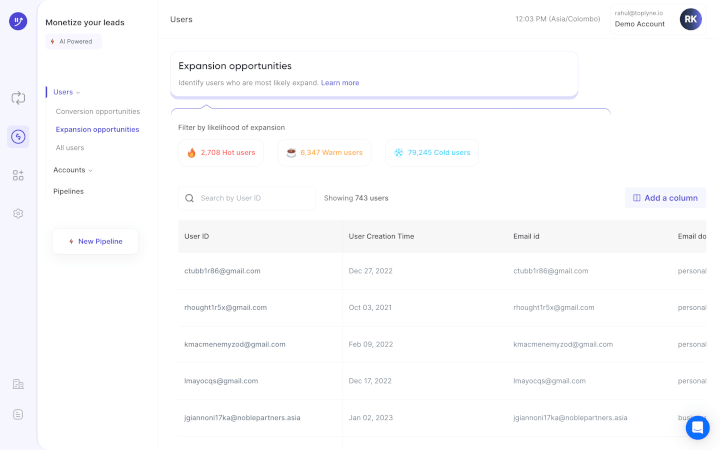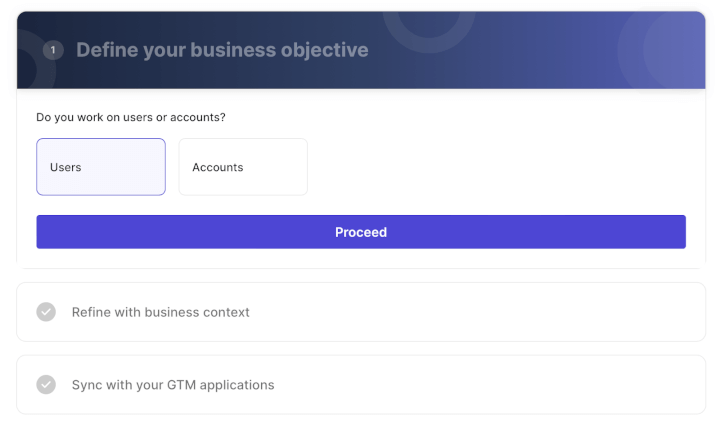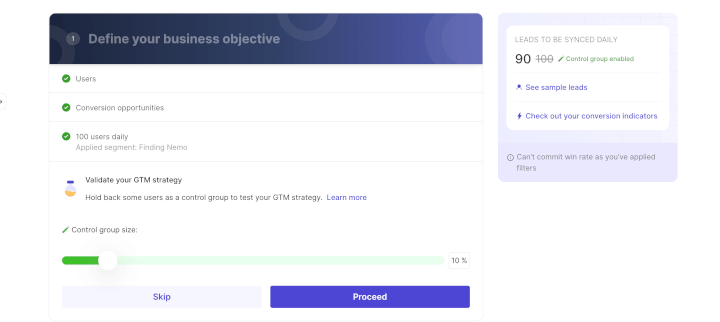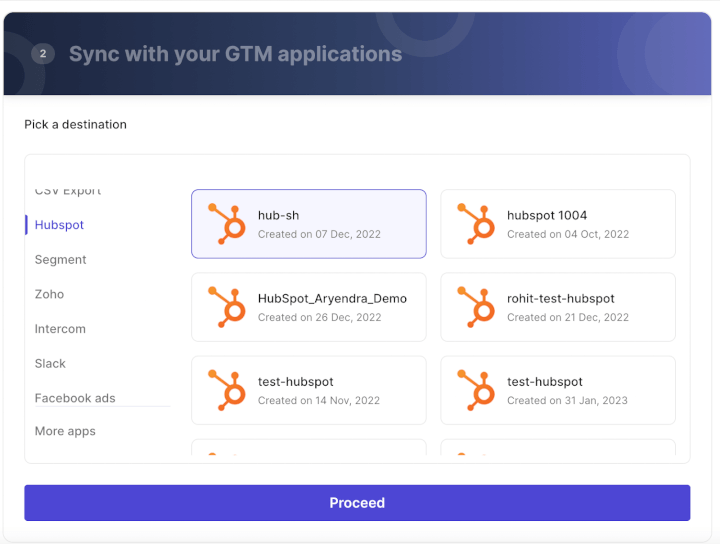A Comprehensive Guide To Understanding Pipeline Management in 2023

Want to skyrocket your sales revenue and become an unstoppable sales superstar?
Brace yourself for the ultimate weapon: mastering the art of sales pipeline management!
It's a powerful process that keeps tabs on your progress, uncovers potential roadblocks, and unlocks a treasure trove of closed deals.

But a leaky pipeline is the last thing you want – that’s like trying to sail a boat with holes in it, watching your precious opportunities slip away.
In this complete guide, we’ll journey into the realm of the sales pipeline and uncover the key to successful management.
Plus, we've got eight genius tips up our sleeve to help you conquer it like a pro. Get ready to revolutionize your sales game!
What Is a Sales Pipeline?
A sales pipeline illustrates how prospects progress through every stage of the sales process, divided into clear stages like:
- Lead generation
- Lead qualification and nurturing
- Conversion
- Retention
- Expansion
Each prospect advances through the pipeline at their own pace, based on:
- Their level of interest,
- Urgency, and
- The extent of their research on your product or service
Sometimes, prospects may even skip certain stages of the pipeline. For instance, if an enthusiastic buyer is referred to you and introduces you to the decision-maker before you even ask, you can bypass the "initial connect" stage and jump straight to "meeting with the decision-maker."
By keeping track of which stage potential customers are in and making projections on how many deals will close within a given timeframe, the sales pipeline empowers sales representatives and sales leaders to optimize revenue generation and forecast revenue accurately.
It's kind of like looking into the future, enabling you to plan and strategize effectively:

Sounds too good to be true? Well, it’s true!
We’ll do a deep dive into how it works and why it’s so important.
But first, it’s crucial to avoid this misunderstanding:
Sales Pipeline vs Sales Funnel
You might hear people using the terms "sales pipeline" and "sales funnel" interchangeably. Although these terms have different meanings, they’re closely related. Think of them as two sides of the same coin.
Imagine you're embarking on an adventure to guide potential customers through their customer journey, from awareness to loyalty. That's what a sales funnel represents - the path prospects take as they discover your product, find value in it, and make the decision to purchase.
But here's the twist: from your perspective, it's a sales pipeline. This pipeline is like your secret map, outlining the next stages you and your team members need to conquer in order to move prospects closer to conversion and ultimately retain them as loyal customers.
During the awareness stage of the sales funnel, your marketing team is focused on lead generation, while in the loyalty phase, your efforts shift to retaining customers and fostering their loyalty.
Simple enough, right?
Now, let's dive deeper into the stages of effective sales pipeline management and unravel the secrets behind each one.
Why Is Sales Pipeline Management So Important?
- Set and Track Revenue Targets
Imagine having a crystal-clear vision of the revenue opportunities that await you as leads on their buyer’s journey enter your pipeline.
It's like peering into a treasure chest of potential earnings that you can calculate and anticipate.
Let's break it down with an example.
If your pipeline has a monthly contract value of $10,000 and your conversion rate is 10%, you can expect to generate $1,000 of conversion revenue each month.
Now, not only does this give you an accurate sales forecast of your revenue, but it also reveals how many conversions you need to achieve higher revenue targets by providing insights into each sales rep's activity level and their prospects' progress through the different sales pipeline stages.
When you combine valuable data points, you’ll be able to predict approximately how many sales your team will realistically close in the next 30, 60, or 90 days.
- Improve Resource Allocation
One of the major benefits of having a well-defined sales pipeline is being able to shine a spotlight on the bottlenecks that hinder leads from making a purchase.
Once you've identified these bottlenecks, you can strategically allocate your resources to address and overcome them. Sales managers can determine which deals are of utmost importance and whether additional time and oversight are needed to ensure success.
This targeted resource allocation approach ensures that you're focusing your efforts where they matter most, maximizing your chances of closing deals and driving business growth.
- Monitor Employee Quotas
Here’s the scoop on marketing-led growth (MLG) and sales-led growth (SLG) pipelines:
The success of your sales pipeline heavily relies on the combined efforts of your marketing and sales teams. They are the dynamic duo working together to drive conversions and propel your business forward.
With effective pipeline management, you gain the ability to closely monitor and evaluate the performance of your marketing and sales employees in securing those valuable conversions.

It's like having a bird's-eye view of their effectiveness and impact.
But it’s a little different when you’re product-led.
The conversion rate is driven by the strength of your product and the overall user experience, rather than the performance of individual employees. With PLG, the focus shifts to providing an exceptional product that naturally leads users toward conversion.
The sales pipeline serves as a guiding light – enabling you to strategically allocate resources, streamline processes, and prioritize promising opportunities for maximum effectiveness.
- Improves Sales Cycle Velocity and Revenue
One of the key benefits of effective pipeline management is the ability to identify sales opportunities for faster conversions.
By streamlining your sales process and eliminating time wasted on unqualified leads, you can accelerate the pace at which deals progress through each stage.
If you notice that it's taking too long for opportunities to move from one stage to the next, tracking data will quickly make that apparent.
This means revenue enters the sales cycle earlier and more frequently, putting you on the fast track to success.
The need for speed is real, and implementing effective pipeline management will help you achieve it.
Eight Best Practices for Sales Pipeline Management
- Standardize Your Sales Pipeline and Processes
When it comes to sales, each of your reps may have their own unique style and approach to reaching out to prospects.
This individuality is pretty valuable, but it can sometimes lead to inconsistent results and inefficiency – if reps are contacting the wrong prospects at the wrong time, that’s going to mess up your sales efforts.
That's why it's crucial to establish a standardized sales pipeline and process that ensures everyone is on the same page and working towards a common goal.

For instance, it's important to align your team on the ideal customer profile (ICP) and the criteria for qualifying leads. This clarity helps your reps focus their efforts on approaching the right prospects, and in the right way. Plus, it makes it easier to evaluate what's working and what needs improvement, allowing you to make data-driven adjustments along the way and set your team up for success.
- Focus on High-Quality Leads
Think about it: not all leads are created equal. By concentrating on the leads that hold the most promise, you can maximize your chances of success and make the most efficient use of your resources.
This means being selective and dropping leads that clearly express disinterest, disengage from the sales process, or don't align with your target buyer persona.
Instead of spreading yourself thin and chasing every lead, prioritize those that are sales-ready, high-value, and most likely to make a significant impact on your business.
By targeting qualified prospects, you create a pathway to generate more revenue growth, which can then be reinvested back into your sales pipeline to drive further growth.
- Track Pipeline Metrics
How can you tell if your sales pipeline is effective? The answer’s been with you all along: track the right metrics!
Let's take a look at some key marketing and sales metrics you should be tracking:
- Number of deals: This tells you the total number of leads currently in your pipeline.
- Average deal size: This helps you understand the value of each deal and its potential impact on your bottom line.
- Conversion rate: It shows you how effective your pipeline is at turning prospects into paying customers.
- Sales velocity: The average time it takes for a new lead to move through your pipeline and convert into a sale – it gives you an idea of the speed at which deals are progressing.
- MQL to SQL or MQL to PQL conversion rate: These metrics help you gauge the effectiveness of your marketing efforts in attracting qualified leads.
- Customer acquisition cost (CAC): This metric represents the amount of money you spend on sales and marketing activities to acquire a new customer.
- Customer lifetime value: Gives you insights into the long-term (monetary) value of your customers.
- Pipeline coverage: Helps you assess whether your pipeline is sufficient to meet your sales goals.
By keeping a watchful eye on these essential metrics, you'll have the power to make data-driven decisions and steer your sales pipeline toward success.
- Continuously Improve Your Pipeline
Remember that your sales pipeline is a dynamic entity that constantly changes. We suggest setting aside some time each week to review these numbers. They'll provide you with a quick snapshot of your pipeline's health and the overall performance of your business.
You'll be able to identify areas that need improvement and measure the impact of any changes you make.
It's important to keep your pipeline organized and efficient to avoid losing out on potential sales.
Focus on discussing the current deals that are on the table, especially the significant opportunities. Encourage open dialogue and brainstorming sessions to overcome obstacles and find strategies to close deals faster.
By making continuous improvements, you'll enhance the effectiveness of your pipeline and increase your chances of achieving sales success.
- Use Your Pipeline to Optimize Lead Generation
When it comes to pipeline management, you might think it's only beneficial once leads enter the pipeline.
But by studying your conversions and metrics, you can improve lead quality right from the start and focus your resources on tactics that actually work.
Here's how to take advantage of your pipeline data:
- Use the power of data analysis to make decisions
- Streamline your lead follow-up process with automation tools for chatbots, social media, and email sequences
- Implement a lead-scoring system to prioritize your efforts in the right place and maximize your chances of success
- Guide Users to Activation
Activation is the "aha!" moment for users when they experience the true value of your product which keeps them engaged and coming back for more.

To ensure users reach this activation point, your pipeline management process should be laser-focused on guiding them there.
Here are some tips to help you along the way:
- Provide users with step-by-step guidance tailored to their specific needs through personalized guided walkthroughs and checklists
- Use demos to highlight how each feature solves users' problems and enhances their experience
- Stay on your users' radar by sending them targeted push notifications or in-app pop-ups.
- Recommend specific features or actions that they may find useful based on their behavior and usage patterns.
To identify your activation milestone and track user progress, consider using Toplyne – it enables you to spot users who have reached the activation point and experiment with strategies to accelerate the ‘aha!’ moment of activation.
- Work on Your Sales Cycle Length
When it comes to B2B sales, the sales cycle can be quite lengthy – and this can be a barrier to closing deals effectively. The longer the process, the greater the chance that prospects may change their minds or explore other options.
That's why it's crucial to keep your sales cycle as short as possible.
Reducing the length of the sales cycle doesn't mean bombarding your leads with constant follow-ups or rushing the process.
Instead, consider these strategies:
- Minimize the number of days between follow-ups to keep the momentum going
- Give your prospects the information they need upfront for informed decision-making about your product
- When prospects have questions or need support, ensure your response time is quick
- Continuously monitor and manage your pipeline to identify the most effective lead sources, successful sales techniques, and reps who excel at closing deals quickly
By experimenting with a streamlined sales process and observing the impact on your sales results, you can gauge the effectiveness of these changes.
- Use the Right Tools
It's crucial to leverage automation tools that offer automation provides real-time accuracy to support the growth of your sales pipeline.

Here are the types of tools that you should consider incorporating into your sales pipeline management stack:
- Product Analytics Tools: They gather customer engagement data from various sources like your website, marketing tools, and product usage data + provide insights by tracking essential metrics like usage data, conversions, win rate, and average deal size.
- CRM Software: A Customer Relationship Management (CRM) tool helps you streamline customer interactions and automate sales processes. It acts as a central hub for tracking prospects, managing customer information, and facilitating effective outreach. Salesforce and Hubspot are 2 of the most popular CRM tools worldwide.
- Lead Scoring Tools: These tools evaluate leads with a scoring system, based on factors like demographics, online behavior, and engagement with marketing materials. By assigning scores, they assist in identifying high-potential leads that are more likely to convert.
But there’s a catch.
Most lead scoring tools are built for MLG and SLG, and don’t take in-app user behavior data into account.
So, is there a tool for effective lead qualification and pipeline management that’s built for PLG?
Toplyne: Pipeline Management for Product-Led Growth
Meet Toplyne, the headless sales AI that brings a new level of intelligence to your sales pipeline.
It seamlessly integrates with your existing analytics and CRM apps, eliminating the need for managing another user interface.
Toplyne can help you:
○ Improve your free-to-paid conversion rate
○ Encourage retention and boost NRR
○ Unlock expansions and expansion revenue
Here’s how companies like Canva and Vercel generate sales pipeline from their self-serve funnel using Toplyne:
- Step 1/7: Create monetization playbooks to surface conversion and expansion opportunities (leads most likely to convert to paying customers, and teams most likely to grow into larger teams)

- Step 2/7: Choose the right leads to target – users (individual users) or accounts (a group of users with an organization).

- Step 3/7: Select the frequency at which you would want leads synced in your GTM apps.

- Step 4/7: Define how many leads you want by either the number of leads or your expected win rate, depending on your sales capacity and GTM strategy.

- Step 5/7: Build custom segments - Build custom segments based on And/Or logic at the deepest level of sub-properties within your product analytics.

- Step 6/7: Validate your GTM strategy - Hold back some users as a control group to test your GTM strategy.

- Step 7/7: Sync your product qualified pipeline into your GTM destinations - CRMs, sales & marketing execution tools, and customer engagement platforms.

With its powerful AI capabilities, you can streamline your sales process and drive significant business growth – say goodbye to manual guesswork and unlock the full potential of your sales pipeline with Toplyne.
Mastering Sales Pipeline Management
Incredible things happen when your sales pipeline is managed like a well-oiled machine.

By adopting some tried-and-true strategies, you can supercharge your sales process and achieve remarkable results:
- Establish a crystal-clear sales process: This ensures everyone is on the same page and knows exactly what steps to take.
- Regularly conduct a regular pipeline review and keep updating it: This keeps it fresh and agile, ready to adapt to any changes that come your way.
- Don't forget the power of analytics: Tracking key metrics gives us valuable insights into our performance and highlights areas for improvement.
But here's the deal: If you're aiming for Product-Led Growth (PLG) success, you might need to approach things a bit differently.
That's where Toplyne comes in.
It's the ultimate companion for managing your pipeline in the world of PLG. With Toplyne by your side, you'll uncover new opportunities, spot trends, and make data-driven decisions to drive your growth.
It's time to unlock the true potential of your sales pipeline. Let's do this!


.svg)









.png)